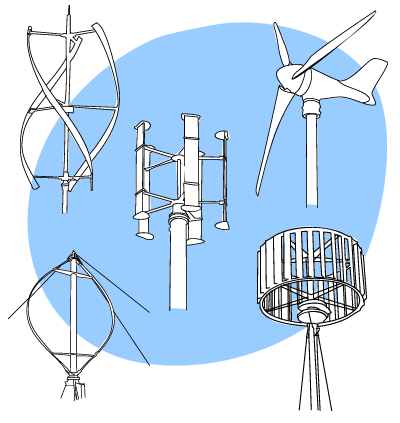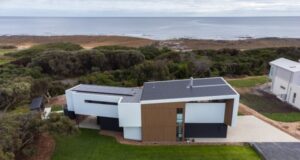

it’s being located.
While it may seem difficult at first to try and work out what type of turbine system to invest in, it’s not all that complicated. Much of the information you need is freely available to you, and can help you make an informed decision about whether wind power is right for you and what system is appropriate. A decent supplier will also help to make sure you’re getting the right turbine for your needs, that it’s being properly sited, and that it’s installed according to the necessary standards and regulations.
Assess your needs
The first step is to decide how many kilowatt (kWh) hours per day you want to generate. Your average daily usage is usually information that is found on your electricity bill, so take an average reading for a whole year’s worth of bills if you have them as electricity usage is likely to spike in the coldest and hottest parts of the year due to additional heating and cooling. If your house relies on passive heating and cooling there’s likely to be much less of a variation, obviously. An average of your power bills will let you know how much energy your home is using per day – and once you know that, you can choose whether you’d like to offset all or part of it with a wind generator.
Available wind power
Next you’re going to need to know how much wind power is available for you to collect in your area. Resourcing free local wind maps online can give you a good indication of average scores for your area but more accurate results can be obtained using an anemometer. The Bureau of Meteorology offers information collected from various parts of Australia on its wind roses page – although other resources might give you a more localised reading for your area.
Your wind turbine supplier should be able to use an anemometer to find the best location on your property to install a turbine. For best results, you will want to see an average wind speed of over 5m/sec (18km/hr) and have a clear open location to avoid wind buffering and reduce turbulence. A position on top of a hill is ideal, thanks to the way wind accelerates over a peak.
Selecting a turbine type
When you’ve determined your kWh target and know how much available energy there is in your area from available wind, then you need to consider how much power your turbine will need to generate to reach your goal.
Your turbine’s efficiency is determined by a couple of factors; the conversion of the kinetic energy of the air (wind) being converted to a mechanical rotation, and the subsequent conversion of that rotation into electricity using magnets passing along a coil.
The first conversion has a theoretical limit of 59.3% efficiency and further energy is lost in the second conversion to a more or less controllable degree, dropping this to 45-50% under prime conditions. This may drop to around 25-30% under less than ideal conditions. Bearing this in mind, it is important to get the most efficient system you can afford to get the maximum results from your turbine. There are many different turbine types and designs, each offering different performance, levels of noise and aerodynamics. A good retailer will be able to recommend one that fits your needs.





